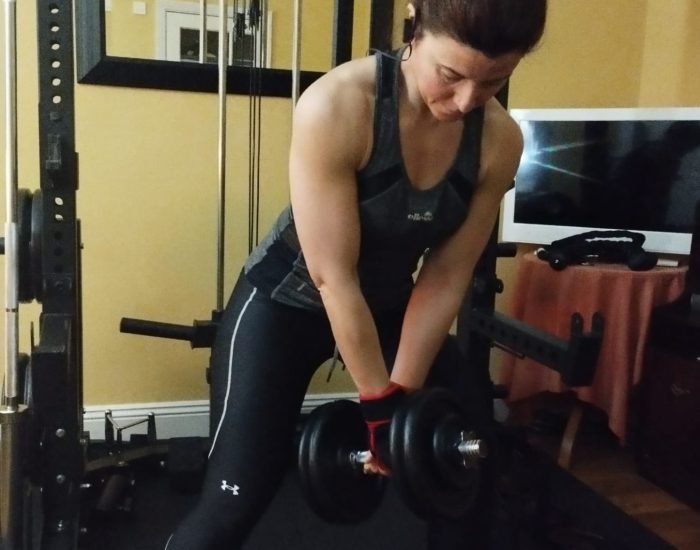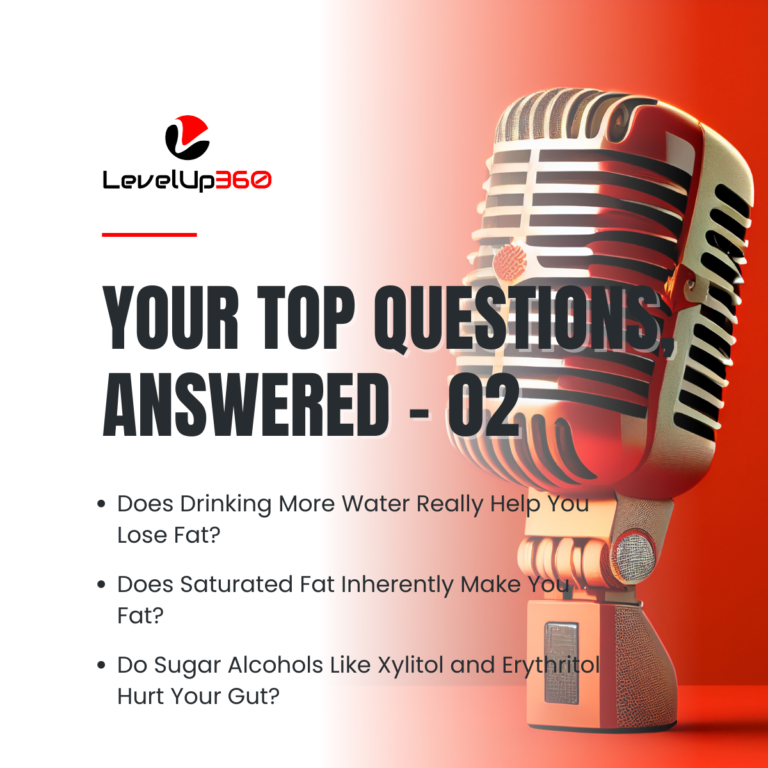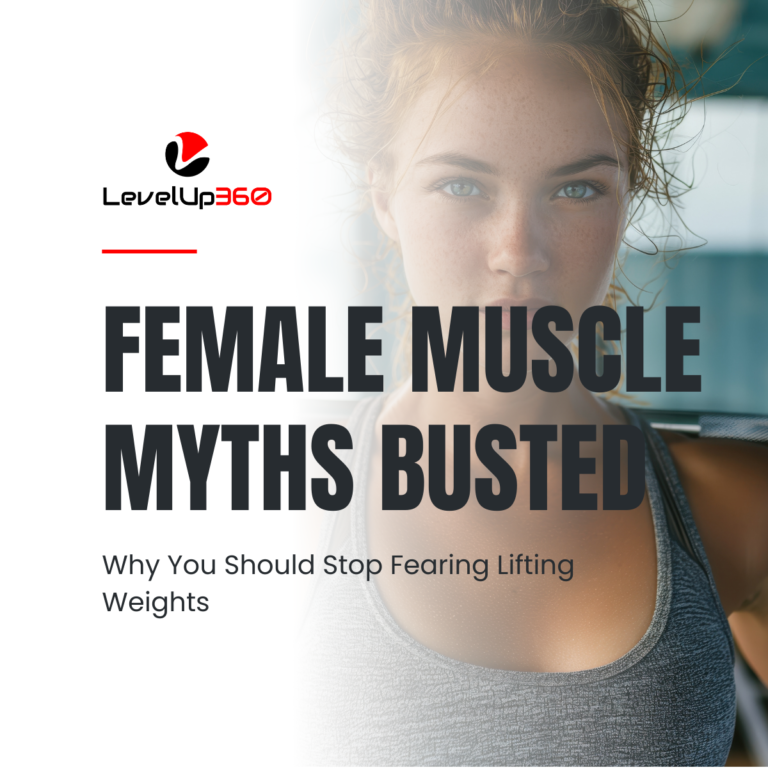
Co-Author: Manuel Tomas.
Strong is the New Skinny: How Women Over 40 Are Losing Fat, Building Muscle, and Feeling Powerful
As women advance beyond the age of 40, losing body fat and maintaining muscle mass often becomes increasingly difficult. Have you noticed it’s become harder to shed pounds through diet and exercise compared to your 20s and 30s? Do you feel like you’ve lost some muscle “tone” and strength lately?
You’re not alone. Let’s look at the key reasons fat loss and maintaining/building muscle gets tougher for women over 40 and depict smart strategies to overcome it.
Exercise is most effective when it becomes a regular lifelong habit, not just a short-term fix
Why Fat Loss Gets Harder After 40
Research confirms that basal metabolic rate (BMR), or the number of calories burned at rest, declines by 5-10% per decade after age 40 due to various factors. This makes creating a sustainable calorie deficit for ongoing fat loss very challenging.
There are several reasons why women over 40 tend to struggle more with shedding body fat:
- Natural Metabolic Slowdown – Basal metabolic rate peaks around the age of 20 and declines by about 5-10% per decade as we age. This means the number of calories burned at rest and during activity decreases with age. A 50-year-old woman may burn 200-300 less calories per day than when she was younger, making weight maintenance much more difficult.
- Loss of Lean Muscle Mass – Starting in the 30s and 40s, women gradually lose lean muscle mass from the ageing process, termed sarcopenia. Muscle tissue is metabolically active and burns more calories than fat tissue. The loss of calorie-burning muscle through sarcopenia is a key contributor to metabolic slowdown with age.
- Hormonal Changes – Perimenopause and menopause cause declines in estrogen and progesterone. This hormonal shift leads to changes in body fat distribution (more abdominal fat). Fat storage around the midsection is correlated with higher risks for metabolic syndrome and cardiovascular disease.
- Lifestyle Factors – Changes in activity patterns, nutrition, sleep, and stress influence metabolic rate as well. Sitting for prolonged periods speeds up muscle loss. High-sugar diets promote fat storage. Sleep deprivation and chronic stress disrupt hormone balance and encourage belly fat accumulation.
Why Building Muscle Gets Harder After 40
While weight lifting remains effective for building strength at any age, certain biological factors make it harder to pack on mass after 40. Here’s an in-depth look at the key reasons muscle building gets tougher for women as they get older:
- Declining Estrogen Levels: Estrogen plays an important role in promoting muscle growth. The hormone aids recovery from exercise and helps direct nutrients toward muscle tissue. However, estrogen declines substantially during perimenopause and menopause. One study found that postmenopausal women had 20% lower muscle strength compared to premenopausal women with similar physical activity levels. The reduction in anabolic estrogen signalling makes building muscle more difficult.
- Decreased Responsiveness to Protein: Research shows that ageing is associated with a diminished response to protein intake for stimulating muscle protein synthesis (this seems to be true for the majority of the population). As a result, most older women need a higher absolute protein dose as well as a higher relative protein intake per day to maximise muscle growth compared to younger women. Without accounting for this blunted sensitivity, they may struggle to support and build additional lean mass.
We published a full article on this – Ageing with Grace: Addressing Anabolic Resistance for a Fuller Life – check it out.
- Reduced Satellite Cell Activation: Satellite cells play a key role in repairing and generating new muscle fibres in response to strength training. However, ageing is accompanied by a reduction in satellite cell number and proliferative capacity. With fewer of these muscle stem cells to facilitate muscular adaptation, it’s harder to pack on size.
- Sarcopenia and Loss of Type II Muscle Fibers: Sarcopenia – the age-related loss of muscle mass – preferentially targets fast-twitch Type II muscle fibres. These fibres have the greatest growth potential, so losing them makes building large, powerful muscles more difficult. Resistance training can help offset Type II fibre atrophy.
Key Problems with Too Much Cardio After 40
To combat their metabolic challenges (i.e. “tone up” and drop body fat), many women over 40 automatically ramp up cardio duration and frequency to burn more calories through exercise.
However, excessive amounts of long-duration cardio performed frequently can backfire and create even worse metabolic issues over time. If you do tons of cardio you are not going to lose body fat as you expect and you are not going to put on that great metabolic machinery which is the muscle, in fact, you will most likely lose muscle, even when the right amount of calories and protein are equated for. Here’s why:
- Adaptation to Endurance Exercise: Lots of steady-state cardio signals your body to become highly efficient at burning fat and utilising oxygen. This endurance adaptation is beneficial in moderation, but excessive cardio takes it too far. You burn fewer daily calories for the same duration of training. Your body becomes adept at sparing fat stores at rest and during exercise. Extreme cardiovascular efficiency may sound good, but it suppresses BMR.
- Muscle Tissue Breakdown: The process of endurance adaptation involves breaking down calorie-burning muscle tissue to become more efficient at cardio. The actin/myosin proteins comprising your muscle fibres degrade through the activation of AMPK and other pathways. Excessive cardio accelerates muscle protein breakdown. You cannot build optimal muscle mass if you are constantly degrading contractile proteins through hours of repetitive cardio.
- Conflicting Signals: Strength training signals muscle growth through mechanical tension. However excessive cardio triggers opposite signals promoting muscle breakdown to enhance oxygen utilisation. The concurrent signalling impedes optimal muscular and metabolic responses. You hit plateaus sooner and often experience muscle loss.
- Reproductive Hormone Disruption: Women over 40 already experience declining estrogen levels approaching menopause. The estrogen dip is exaggerated with excessive exercise. Issues like hot flashes, vaginal dryness, and accelerated bone loss occur. Low estrogen also encourages fat accumulation in the midsection.
- Thyroid Hormone Suppression: Similar to estrogen, thyroid hormone declines with age in women which slows BMR. Over-exercising exacerbates low thyroid, further suppressing metabolism. This double hit of reproductive and thyroid hormone suppression tanks your metabolic rate. Fat loss becomes nearly impossible despite intensive cardio.
- Risk of Under Recovery: Under recovery occurs when your body has inadequate recovery between demanding exercise sessions. You eventually burn the candle at both ends. Excessive cardio for too long without rest raises recovery risk. Symptoms include persistent fatigue, decreased performance, lack of motivation, insomnia, depression, and frequent infections. Under recovery prevents muscle growth, accelerates fat gain, and heightens injury risk due to depleted energy reserves.
Smart Strategies Women Over 40 Are Using to Lose Fat, Build Muscle, and Feel Powerful

Cardio is fantastic but you have to apply it intelligently. To avoid the pitfalls of excessive cardio, I would recommend women over 40 optimise exercise in several ways:
- Incorporate Resistance Training: Lift weights 2-3 times per week using a structured program to maintain and build lean muscle mass and stronger bones. The metabolic boost from extra muscle counteracts the age-related BMR decline.
Note: By resistance training, I don’t mean what I see frequently themed as “weightlifting or strength classes” in which you use weights at the rhythm of a song or do circuits with some dumbbell/kettlebell exercises. That type of training might build muscle endurance but they are basically cardio with weights and don’t produce the muscle-building adaptation we are seeking here.
What I am referring to is progressive resistance training. Progressive strength training refers to slow, tempo-controlled resistance movements done with proper form and alignment, targeting all the major muscle groups of the body with increased intensity and volume over time.
- Include Low to Moderate Intensity Aerobic Exercise: Incorporate low to moderate-intensity aerobic exercise 2-4 times a week but don’t go overboard.
- Allow Proper Recovery: Schedule at least 1-2 rest days without training per week. Signs you need more recovery include persistent fatigue, sore joints, lack of motivation, and reduced performance. Prioritise sleep, nutrition, and stress management.
- Periodise Training Cycles: Vary your training focus over 4-12 week periods to stress your body in different ways and prevent adaptation. For example, focus on the cardio capacity for a few weeks while avoiding or minimising muscle loss, then switch to a strength-building or high-intensity phase.
- Include Sprint Interval Training: SIT is characterised by repeated, brief intermittent bursts of all-out exercise, typically 4–6 intervals of up to 30 seconds each, interspersed with periods of active or passive recovery, generally around 4–5 minutes.
My favourite form for women over 40 is Sprint Interval Training on a bike, which is much easier on the joints. This builds cardio capacity without over-training and with a much lower injury risk.
- Avoid Excessive Repetitive Movements: Cross-train to reduce repetitive impact on the joints. Alternate between cycling, elliptical, swimming, rowing, and incline walking. Strength trains multiple muscle groups.
- Listen To Your Body: Monitor energy levels and recovery time. Excess fatigue, lack of motivation, insomnia, and slowed progress indicate you may be overtraining. Adjust your program accordingly.
- Manage Stress: Utilise meditation, yoga, massage, and other recovery techniques to counterbalance strenuous training. Keeping cortisol under control optimises hormones and metabolism.
Note: The above list doesn’t mean that you need to incorporate everything and go overboard with exercise. I would absolutely include resistance training and aerobic training but they need to be balanced out. The most important aspects to consider are recovery and managing stress levels. So, more is not better, and when more is not optimal is not better anymore. Let that sink in.
Conclusion
In summary, while regular cardio provides important health benefits, excessive amounts of long distance cardio can backfire and derail progress for women over 40. A balanced, periodized approach to exercise that allows proper recovery while incorporating strength training provides superior metabolic, hormonal, and aesthetic benefits.
By following an appropriate exercise plan, smart nutrition, and listening to their bodies, more and more women over 40 are making outstanding improvements to their fitness, health, and confidence.
What are your biggest obstacles to fat loss and muscle building after 40? What exercise strategies have worked for you?
Recommended reading
Recommended reading
Additional Resources
Feeling in control of your health
If you are interested in improving your health and wellness, check out other resources such as Our Blog, Free Resources and/or join our private Body-Mind Transformation Secrets Community on Facebook, and The 360 Transformation Blueprint Podcast on Spotify and go on an even deeper dive with me to uncover how to succeed in your health and wellness goals.
You may also be interested in our Sleep Secrets Cheat Sheet. It is a great resource with strategies to fix and optimize your sleep which is crucial to succeeding in your health and wellness goals.
Resources
Pictures








